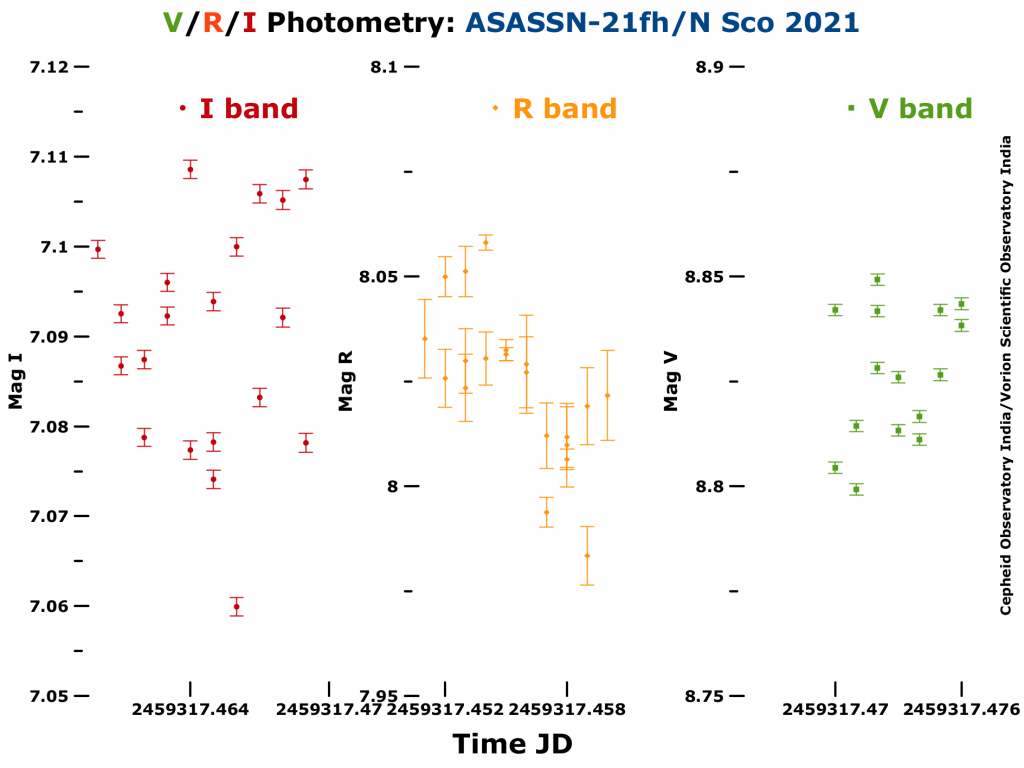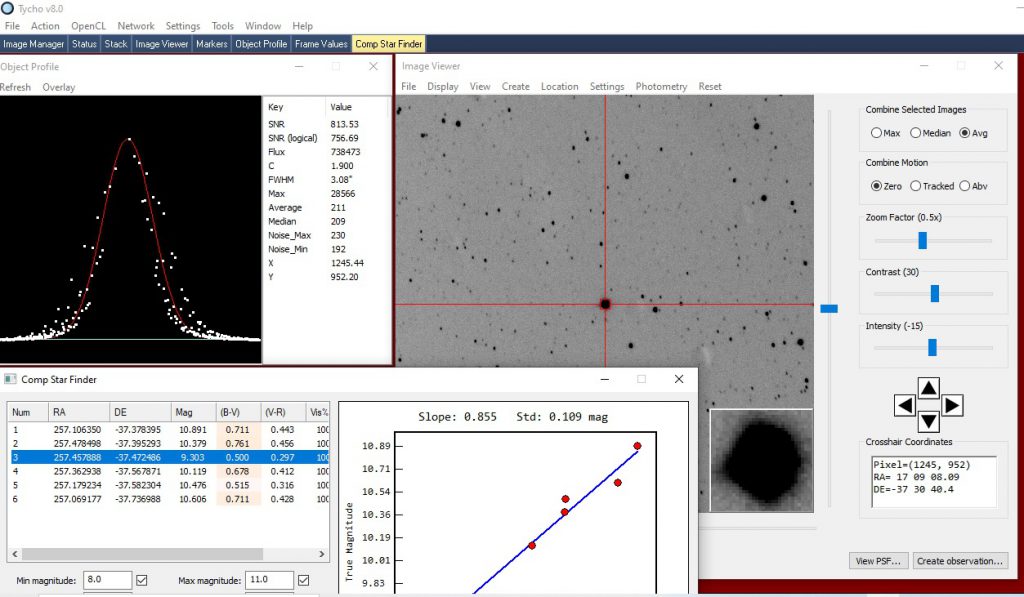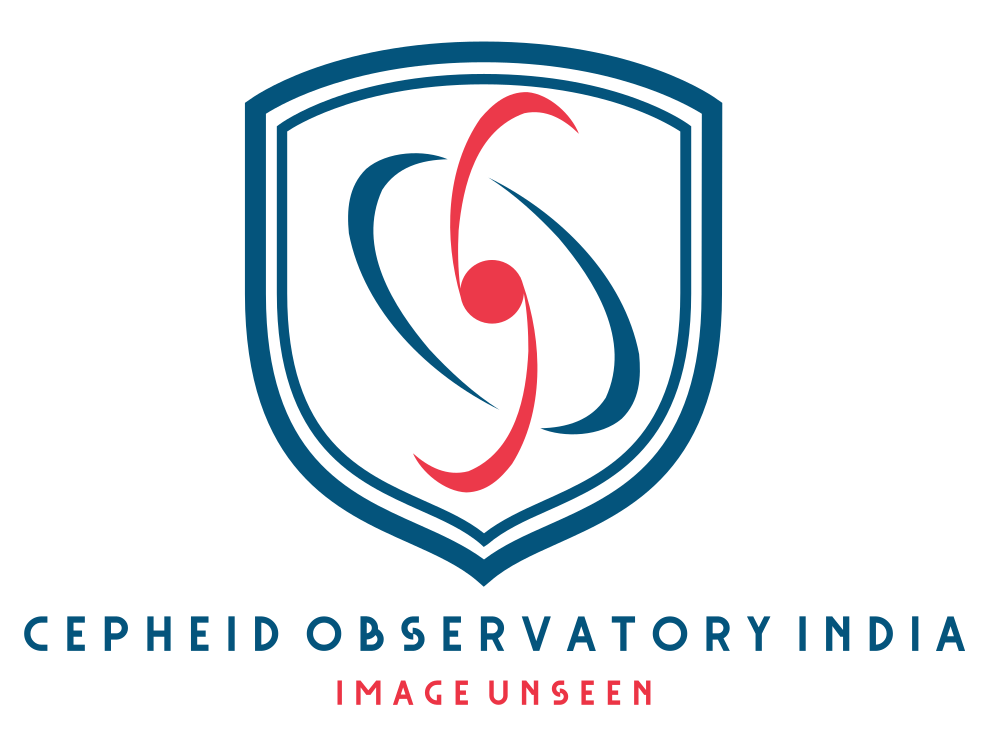Image:
Object: ASASSN-21fh
DATE-OBS: 2021-04-12T23:08:38
EXPTIME: 600.00 (seconds)
SUBFRMS: 20I/20R/15V
OBJCTRA: 17 09 08.11
OBJCTDEC: -37 30 40.9
Instrument:
Catalog: APASS
Bessell (B): +*.*, Bessell (V): +8.84*
Bessell (R): +8.03, Bessell (I): +7.09
CCD: ATIK-383L+
FILTERS: V/R/I
TELESCOPE: C11, 1623.0mm
PRiSMv10, Tycho
Site:
ORIGIN: Cepheid Observatory, India, Vorion Scientific, India
SITELAT: +24:55:00:00
SITELONG:+75:33:58:99
Observers:
V.K.Agnihotri, B. Kumar, S. Mahawar, K.Vora
Remark:
Sky Clear. https://www.aavso.org/aavso-alert-notice-740
End


Electronic Telegram No. 4955
Central Bureau for Astronomical Telegrams
Mailing address: Hoffman Lab 209; Harvard University;
20 Oxford St.; Cambridge, MA 02138; U.S.A.
e-mail: cbatiau at eps.harvard.edu (alternate cbat at iau.org)
URL http://www.cbat.eps.harvard.edu/index.html
Prepared using the Tamkin Foundation Computer Network
V1710 SCORPII = NOVA SCORPII 2021 = PNV J17091000-3730500
Paul Camilleri, Katherine, Northern Territory, Australia, reports his
discovery of an apparent nova (mag 9.5) on three 5-s exposures taken on Apr.
12.7625 UT with a Nikon D3200 digital SLR camera (+ 85-mm-f.l. f/2 lens),
noting the variable to have an orange color; the approximate position was
given as R.A. = 17h09m50s, -37d30’50” (equinox J2000.0). The variable was
given the provisional designation PNV J17091000-3730500 automatically when it
was posted to the Central Bureau’s TOCP webpage. R. Fidrich, Budapest,
Hungary, provides position end figures 08s.11, 40″.9 measured on a B-band CCD
image obtained on Apr. 12.814 with an iTelescope 0.50-m f/6.8 reflector
located at Siding Spring, NSW, Australia. F. Kugel, Banon, France, measured
position end figures 08s.32, 42″.6 from three stacked 30-s CCD images taken
with a 195-mm-f.l. f/2.8 lens on Apr. 13.12. A. Pearce, Nedlands, W.
Australia, provides position end figures 08s.10, 40″.9 from a CCD image
obtained remotely on Apr. 13.632 with a 0.43-m f/6.8 reflector located at
Siding Spring (reference stars from the Gaia DR2 catalogue).
Additional digital-image magnitudes (unfiltered unless noted otherwise)
that have been reported for PNV J17091000-3730500: Apr. 11.395 UT, [16.8
(All-Sky Automated Survey for Supernovae; communicated by P. Schmeer,
Saarbruecken-Bischmisheim, Germany); 11.682, [13.8 (R. McNaught,
Coonabarabran, NSW, Australia; 59-s exposure with Canon 6D camera +
135-mm-f.l. f/2.8 lens); 11.758, [12 (Camilleri); 11.794, [13.5 (McNaught);
12.168, g = 11.1 (ASAS-SN; independent discovery reported by Schmeer; position
end figures 08s.11, 40″.4); 12.408, g = 10.4 (ASAS-SN; Schmeer); 12.55, 9.5
(R. Kaufman, Bright, Vic., Australia; green channel approximating V band,
Canon 800D camera + 200-mm-f.l. lens; image posted via the following URL
https://tinyurl.com/4t5akzyy); 12.583, 9.6 (McNaught); 12.687, 9.5 (McNaught);
12.796, 9.4 (McNaught); 12.814, B = 10.64 (Fidrich; the variable was very red,
with B-V being at least +1.5); 12.955, R = 8.03 (V. Agnihotri, Kota,
Rajasthan, India; communicated via E. O. Waagen, AAVSO); 12.965, I = 7.09
(Agnihotri); 12.972, V = 8.84 (Agnihotri); 13.12, 8.9 (Kugel); 13.372, B =
9.71 (J. Backman, Lappeenranta, Finland; via Waagen); 13.422, B = 10.05 (J.-F.
Hambsch, Mol, Belgium; via Waagen); 13.423, I = 6.74 (Hambsch); 13.424, V =
8.69 (Hambsch); 13.632, V = 8.53 (Pearce); 13.633, B = 10.32 (Pearce); 13.634,
I = 6.58 (Pearce); 13.787, 8.5 (F. Romanov, Yuzhno-Morskoy, Nakhodka, Russia;
from five stacked 5-s exposures taken with a Canon EOS 60D camera +
135-mm-f.l. f/5.6 lens at ISO 6400 with a hazy sky; image posted at website
URL https://www.flickr.com/photos/filipp-romanov/51114244018).
Visual magnitude estimates for PNV J17091000-3730500: Apr. 13.068 UT,
8.8 (A. Amorim, Florianopolis, Brazil; via Waagen); 13.128, 8.9 (L. Araujo,
Pelotas, Brazil; via Waagen); 13.342, 8.7 (Amorim); 13.715, 8.8 (C. Wyatt,
Walcha, NSW, Australia; via Waagen); 13.732, 8.8 (Pearce).
Waagen also informs the Bureau that Joshi et al. have reported that their
spectroscopy obtained on Apr. 12.916 UT with the Mt. Abu PRL 1.2-m telescope
(range 440-900 nm, resolutions about 500 and 2000) show this to be an “Fe II”-
type of classical nova caught early in its outburst, with H-alpha, H-beta, Fe
II, and O I lines showing P-Cyg profiles on a red continuum (details are given
at website URL https://www.astronomerstelegram.org/?read=14544).
E. Kazarovets informs the Central Bureau that the permanent GCVS
designation V1710 Sco has been given to this nova.
NOTE: These ‘Central Bureau Electronic Telegrams’ are sometimes
superseded by text appearing later in the printed IAU Circulars.
(C) Copyright 2021 CBAT2021 April 14 (CBET 4955) Daniel W. E. Green
